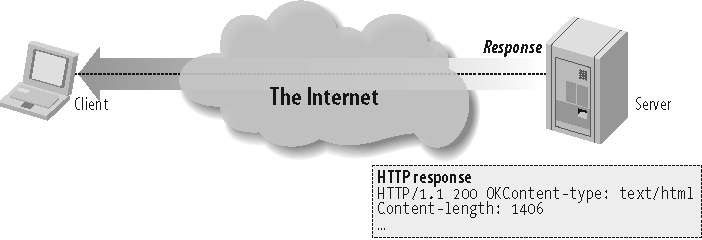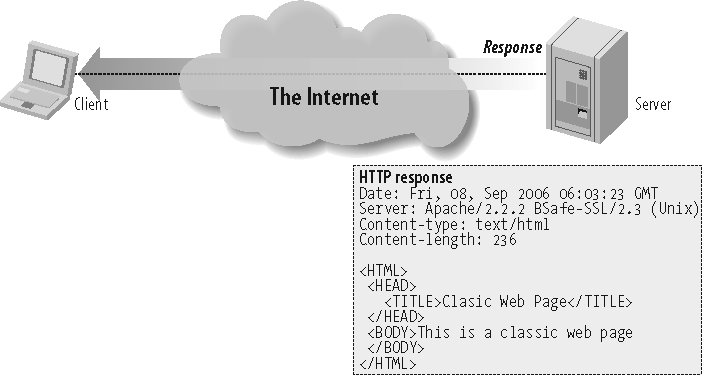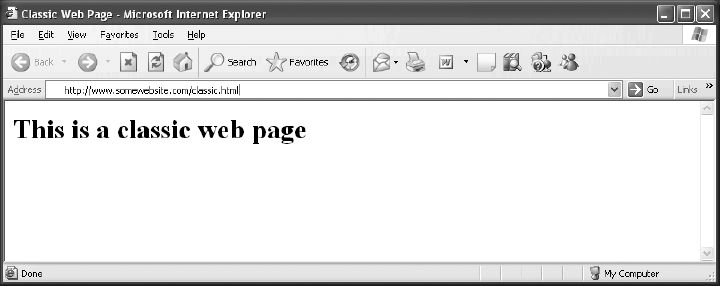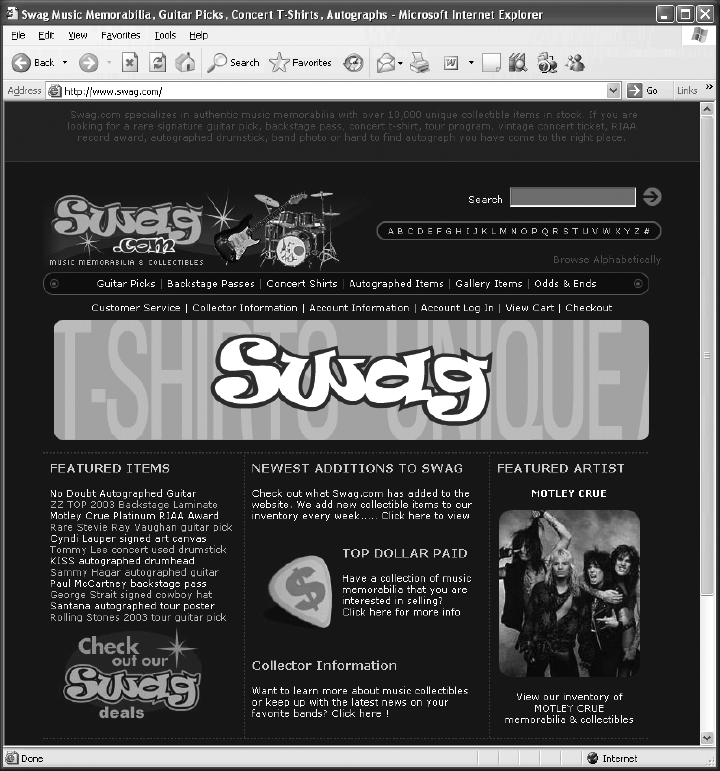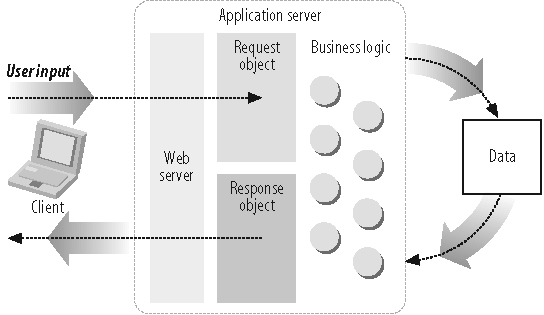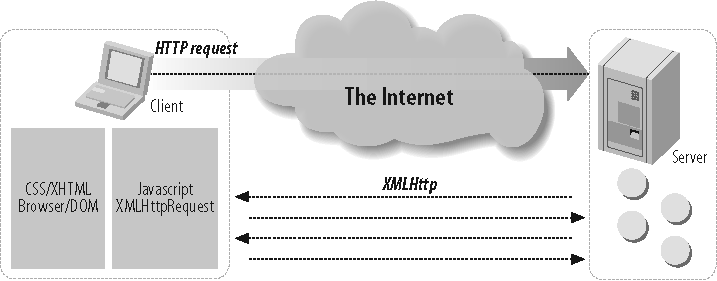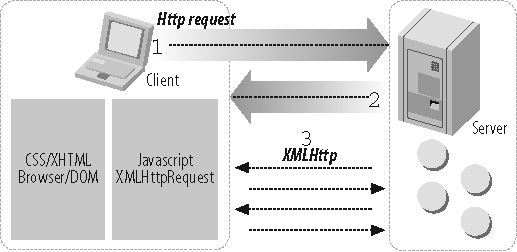People are flocking to the Web more than ever before, and this growth is being driven by applications that employ the ideas of sharing and collaboration. Web sites such as Google Maps, MySpace, Yahoo!, Digg, and others are introducing users to new social and interactive features, to seeding communities, and to collecting and reusing all sorts of precious data.
The slate has been wiped clean and the stage set for a new breed of web application. Everything old is new again. Relationships fuel this new Web. And service providers, such as Yahoo!, Google, and Microsoft, are all rushing to expose their wares. It's like a carnival! Everything is open. Everything is free—at least for now. But whom can you trust?
Though mesmerized by the possibilities, as developers, we must remain vigilant—for the sakes of our users. For us, it is critical to recognize that the fundamentals of web programming have not changed. What has changed is this notion of "opening" resources and data so that others might use that data in new and creative ways. Furthermore, with all this sharing going on we can't let ourselves forget that our applications must still defend themselves.
As technology moves forward, and we find our applications becoming more interactive—sharing data between themselves and other sites—it raises a host of new security concerns. Our applications might consist of services provided by multiple providers (sites) each hosting its own piece of the application.
The surface area of these applications grows too. There are more points to watch and guard against—expanding both with technologies such as AJAX on the client and REST or Web Services on the server.
Luckily, we are not left completely empty-handed. Web security is not new. There are some effective techniques and best practices that we can apply to these new applications.
Today, web programming languages make it easy to build applications without having to worry about the underlying plumbing. The details of connection and protocol have been abstracted away. In doing so developers have grown complacent with their environments and in some cases are even more vulnerable to attack.
Before we continue moving forward, we should look at how we got to where we are today.
In 1989, at a Conseil Européen pour la Recherche Nucléaire (CERN) research facility in Switzerland, a researcher by the name of Tim Berners-Lee and his team cooked up a program and protocol to facilitate the sharing and communication of their particle physics research. The idea of this new program was to be able to "link" different types of research documents together.
What Berners-Lee and the others created was the start of a new protocol, Hypertext Transfer Protocol (HTTP), and a new markup language, Hypertext Markup Language (HTML). Together they make up the World Wide Web (WWW).
The abstract of the original request for comment (RFC 1945) reads:
The Hypertext Transfer Protocol (HTTP) is an application-level protocol with the lightness and speed necessary for distributed, collaborative, hypermedia information systems. It is a generic, stateless, object-oriented protocol which can be used for many tasks, such as name servers and distributed object management systems, through extension of its request methods (commands). A feature of HTTP is the typing of data representation, allowing systems to be built independently of the data being transferred.
HTTP has been in use by the World-Wide Web global information initiative since 1990. This specification reflects common usage of the protocol referred to as "HTTP/1.0".
The official RFC outlines everything there is to say about HTTP and is located at http://tools.ietf.org/html/rfc2616. If you have any trouble sleeping at night, reading this might help you out.
Berners-Lee had set out to create a way to collate his research documents—to keep things just one click away. It was really just about information and data organization; little did he know he was creating the foundation for today's commerce.
Today, we don't even see HTTP unless we want to deliberately. It has, for the most part, been abstracted away from us. Yet, it is at the very heart of our applications.
There's this guy—let's call him Jim. He's an old-timer who can spin yarns about the first time he ever sat down at a PDP-11. He still has his first programs saved on paper tape and punch cards. He's one of the first developers who helped to create the Internet that we have come to know and love.
To Jim, protocol-level communication using HTTP is like breathing. In fact, he would prefer to not use a browser at all, but rather just drop into a terminal window and use good ol' telnet.
Jim types:
$telnet www.somewebsite.com 80
GET classic.html / HTTP/1.1and gets back:
Trying xxx.xxx.xxx.xxx...
Connected to www.somewebsite.com (xxx.xxx.xxx.xxx).
Escape character is '^]'.
HTTP/1.1 200 OK
Date: Fri, 08, Sep 2006 06:03:23 GMT
Server: Apache/2.2.1 BSafe-SSL/2.3 (Unix)
Content-type: text/html
Content-length: 236
<HTML>
<HEAD>
<TITLE>Classic Web Page</TITLE>
</HEAD>
<BODY>This is a classic web page
</BODY>
</HTML>There are no GUIs or clunky browsers to get in the way and obfuscate the code, just plain text—simple, clear, and true. Jim loves talking to web servers this way. He thinks that web servers are remarkable devices—very chatty. Jim also likes to observe the start and stop of each request and response cycle. Jim sees a different side of the Web than most users will. He can see the actual data interchange and transactions as they happen. Let's go over what Jim did.
When Jim hooked up with the server using telnet he established a
connection to the server and began initiating an HTTP transaction.
Next, he evoked the HTTP GET
command or method followed by the
name of the resource that he wanted—in this case, classic.html. This took the form of a
specified Uniform Resource Identifier (URI),
which is a path that the server associates with the location of the
desired resource. Figure 1-1 shows an HTTP
request.
Finally, he indicated his preference for protocol type and
version to use for the transaction. The method was not complete until he terminated
the line with a carriage return and line feed (CRLF).
Then, the HTTP command was sent to the server for processing.
The server sees the request and decides whether to process it. In this
case it decides the request can be processed. After processing, the
server arrives at a result and sends its STATUS CODE followed by the message,
formatted in blocks of data called HTTP messages, back to
Jim.
What Jim got back from the server was a neatly bundled package that contained some information about how the server handled the request, and the requested resource. Figure 1-2 shows an HTTP response.
*Click* Now the transaction is over, and I mean over. Jim asked for his resource and got it. Finito. Everything is done.
This is important to remember. HTTP transactions are stateless. No state was persisted by this transaction. The server has moved on to service other requests, and if Jim shows up again, he will have to start all over and negotiate all of the same instructions. Nothing is remembered. The transaction is over.
Tip
Stateless is a key concept in computer science. The idea is that the application's running "state" is not preserved for future actions. It's like asking someone for the time. You ask, you get your answer, and the transaction is over—you don't get to have a conversation.
How can we be like Jim and tickle the server into giving up its information? Well, there is actually a whole set of commands baked in to the HTTP protocol that are rarely seen by anyone. But because we are building our applications on top of these commands, we should see how they actually work. I'd highly recommend (and I'm sure Jim would agree) that you read HTTP: The Definitive Guide by David Gourley and Brian Totty (O'Reilly) for more information. This book is a handy compass for any would-be adventurer wanting to explore the overgrown foot trails of HTTP. Now, let's take out the machete and start whacking.
The commands a web server responds to are called HTTP methods. The HTTP RFC defines eight standard methods, yet it is ultimately up to the web server vendor as to which of these methods are actually implemented. Table 1-1 lists the eight common HTTP methods.
Table 1-1. HTTP methods
Command | Description |
|---|---|
I'll show you my
headers if you show me yours! This command is particularly
useful for retrieving metadata written in response headers.
The request asks for a response identical to one that it would
get from a | |
| This is it baby! By far
the most common command issued over HTTP. It is a simple
request to |
This is the command that makes us trust our users. This is where we accept data from users. If malicious code is going to enter our system, it will most likely be through this command. | |
Upload content to the server. This is another gotcha command that requires data input validation. | |
Deletes a specific resource. Yeah, right? Ah, no. This command is rarely implemented. | |
Echoes back the received request so that a client can see what intermediate servers are adding or changing on the request. This command is useful for discovering proxy servers and other intermediate servers involved in the request. | |
Returns the HTTP
methods that the server supports. This can be used to check
the functionality of a web server. Does the server implement
| |
For use with a proxy server that can change to an SSL tunnel. |
Some HTTP methods defined by the HTTP specification are
intended to be "safe" methods—meaning no action (or state change)
will be taken on the server. The two main methods GET and HEAD fall into this category.
Unfortunately, this "safeness" is more of a guideline than a
rule. Some applications have been known to break this contract by
posting live data via the GET
method using things such as the QueryString parameters.
It is architecturally discouraged to use GET in such situations. Doing so may cause
other problems with systems that rely on adherence to the
specifications—such as other dynamic web pages, proxy servers, and
search engines.
Likewise, unsafe methods (such as POST, PUT, and DELETE) should be displayed to the user in
a special way, normally as buttons rather than links, thus making
the user aware of possible obligations.
After we've successfully issued a command to a willing HTTP server, the server gets to respond. Figure 1-3 shows a more detailed HTTP response.
The HTTP response starts with a line that includes an acknowledgment of the HTTP protocol being used, an HTTP response status code, and ends with a reason phrase:
HTTP/1.1 200 OK
Next, the server writes some response headers to help further describe the server environment and message body details:
Date: Fri, 08, Sep 2006 06:03:23 GMT Server: Apache/2.2.1 BSafe-SSL/2.3 (Unix) Content-type: text/html Content-length: 236
Finally the server sends the actual body of the HTTP message:
<HTML>
<HEAD>
<TITLE>Classic Web Page</TITLE>
</HEAD>
<BODY>This is a classic web page
</BODY>
</HTML>That's it. Now, let's take a look at what some of the response status codes are and how they get used.
Every HTTP request made to a willing HTTP server will respond with an HTTP status code. This status code is a three-digit numeric code that tells the client/browser whether the request was successful or whether some other action is required. Table 1-2 shows the request received, and continuing process.
The action was successfully received, understood, and accepted. Table 1-3 shows the codes that indicate successful action.
The client must take additional action to complete the request. Table 1-4 lists redirection codes.
Table 1-4. 3xx redirection codes
Status code | Description |
|---|---|
300 | Multiple Choices |
301 | Moved Permanently |
302 | Moved Temporarily (HTTP/1.0) |
302 | Found (HTTP/1.1) |
303 | See Other (HTTP/1.1) |
304 | Not Modified |
305 | Use Proxy (Many HTTP clients, such as Mozilla and Internet Explorer, don't correctly handle responses with this status code.) |
306 | No longer used, but reserved |
307 | Temporary Redirect |
The request contains bad syntax or cannot be fulfilled. Table 1-5 shows client error codes.
Table 1-5. 4xx client error codes
Status code | Description |
|---|---|
400 | Bad Request. |
401 | Unauthorized—Similar to 403/Forbidden, but specifically for use when authentication is possible but has failed or not yet been provided. |
402 | Payment Required. (I love this one.) |
403 | Forbidden. |
404 | Not Found. |
405 | Method Not Allowed. |
406 | Not Acceptable. |
407 | Proxy Authentication Required. |
408 | Request Timeout. |
409 | Conflict. |
410 | Gone. |
411 | Length Required. |
412 | Precondition Failed. |
413 | Request Entity Too Large. |
414 | Request-URI Too Long. |
415 | Unsupported Media Type. |
416 | Requested Range Not Able to be Satisfied. |
417 | Expectation Failed. |
449 | Retry With—A Microsoft extension: the request should be retried after doing the appropriate action. |
The server failed to fulfill an apparently valid request. Table 1-6 shows server error codes.
HTTP headers are like the clothes for HTTP transactions. They are metadata that accent the HTTP request or response. Either the client or the server can arbitrarily decide that a piece of information may be of interest to the receiving party.
The HTTP specification details several different types of headers that can be included in HTTP transactions.
General headers can appear in either the request or the response, and they are used to help further describe the message and client and server expectations. Table 1-7 lists the general HTTP headers.
Table 1-7. General HTTP headers
Header | Description |
|---|---|
[a] | |
Connection | Allows clients and servers to specify connection options |
Date | Timestamp of when this message was created |
Mime-Version | The version of MIME that the sender is expecting |
Trailer | Lists the set of headers that trail the message as part of chunked-encoding |
Transfer-Encoding | What encoding was performed on the message |
Upgrade | Gives a new version or protocol that the sender would like to upgrade to |
Via | Shows what intermediaries the message has gone through |
Cache-control [a] | Used to pass caching directions |
Pragma[a] | Another way to pass caching directions along with the message |
[a] Optionally used to help with caching local copies of documents. | |
Request headers are headers that make sense in the context of a request. The request header fields allow the client to pass metadata about the request, and about the client itself, to the server. These fields act as request modifiers, with semantics equivalent to the parameters on a programming language method invocation. It is important to recognize that this data is accepted raw from the client without any kind of validation. Table 1-8 shows typical HTTP request headers.
Table 1-8. HTTP request headers
Header | Description |
|---|---|
Accept | Tells the server that it accepts these media types |
Accept-Charset | Tells the server that it accepts these charsets |
Accept-Encoding | Tells the server that it accepts this encoding |
Accept-Language | Tells the server that it prefers this language |
Authorization | Contains data for authentication |
Expect | Client's expectations of the server |
From | Email address of the client's user |
Host | Hostname of the client's user |
If-Match | Gets document if entity tag matches current |
If-Modified-Since | Honors request if resource has been modified since date |
If-Non-Match | Gets document if entity tag does not match |
If-Range | Conditional request for a range of documents |
If-Unmodified-Since | Honors request if resource has not been modified since date |
Max-Forwards | The maximum number of times a request should be forwarded |
Proxy-Authorization | Same as authorization, but for proxies |
Range | Requests a range of documents, if supported |
Referrer | The URL that contains the request URI |
TE | What "extension" transfer encodings are okay to use |
User-Agent | Name of the application/client making the request |
Request header field names can be extended reliably only in combination with a change in the protocol version. However, new or experimental header fields may be given the semantics of request header fields if all parties in the communication recognize them to be request header fields. Unrecognized header fields are treated as entity header fields.
Finally, nothing guarantees the validity of this metadata, since it is provided by the client. The client could lie. Therefore, backend applications and services should validate this data under authenticated conditions before depending on any values.
Warning
The server is not guaranteed to respond to any request headers. If it does, it does so out of the goodness of its administrator's heart, for none of them are required.
Response messages have their own set of response headers. These headers provide the client with information regarding this particular request. These headers can provide information that might help the client make better requests in the future. Table 1-9 shows common HTTP response headers.
Table 1-9. HTTP response headers
Header | Description |
|---|---|
Age | How old the response is |
Public | A list of request methods the server supports |
Retry-After | A date or time to try back—if unavailable |
Server | The name and version of the server's application software |
Title | For HTML documents, the title as given in the HTML |
Warning | A more detailed warning message than what is in the reason phrase of the HTTP response |
Accept-Ranges | The type of ranges that a server will accept |
Vary | A list of other headers that the server looks at that may cause the response to vary |
Proxy-Authenticate | A list of challenges for the client from the proxy |
Set-Cookie | Used to set a token on the client |
Set-Cookie2 | Similar to Set-Cookie |
WWW-Authenticate | A list of challenges for the client from the server |
Entity headers provide more detailed information about the requested entity. Table 1-10 lists some typical HTTP entity headers.
Content headers describe useful metadata about the content in the HTTP message. Most servers will include data about the content type, length of content, encoding, and other useful information. Table 1-11 is a list of HTTP content headers.
Table 1-11. HTTP content headers
Header | Description |
|---|---|
Content-Base | The base URL for resolving relative URLs |
Content-Encoding | Any encoding that was performed on the body |
Content-Language | The natural language that is best used to understand the body |
Content-Length | The length or size of the body |
Content-Location | Where the resource is located |
Content-MD5 | An MD5 checksum of the body |
Content-Range | The range of bytes that this entity represents from the entire resource |
Content-Type | The type of object that this body is |
The HTTP header part of the message terminates with a bare CRLF.
The message or entity body is where the payload of an HTTP message is located. It is the meat of the message. When using HTTP the most common message body will usually be formatted as HTML.
I can't believe that it has been only a little more than 10 years since the creation of the Web, and I am about to discuss "classic" web pages. But as Dylan said, "The times they are a changin'." Figure 1-4 shows what a classic web page looks like.
Actually, a classic web page looks like this:
<HTML>
<HEAD>
<TITLE>Classic Web Page</TITLE>
</HEAD>
<BODY>
<h1>This is a classic web page</h1>
</BODY>
</HTML>That's pretty much how things look under the covers. Not a lot of magic, but you can see the stitching in the seams. Now, this text stuff is great for Jim, but some people want pictures! For those people we need something different—something that would allow them to "browse" the content. Enter the browser!
News of Berners-Lee's invention reached others in the educational community, and by the early 1990s researchers at colleges and universities around the globe began to use the Web to index their research documents.
Legend has it that upon seeing a demonstration of a browser and web server at the University of Illinois' National Center for Supercomputing Applications (NCSA), a couple of graduate students named Marc Andreessen and Eric Bina, decided to develop a new browser that they would name NCSA Mosaic. Coupled with NCSA's HTTP server the two became an immediate hit.
The biggest difference about this new browser was that it allowed for images in the markup language. The notion of including images in the markup language really sexed up the otherwise text-heavy reference pages. Previously images were referenced as links and would open in their own window after clicked. With Mosaic's new features you could now achieve something that corporate America could understand—branding.
Andreessen then took the idea to the bank and created the Internet's first commercial product, which was a little web browser named Netscape. Yep. Netscape. Netscape quickly gained acceptance, and its usage skyrocketed. God bless America. You have to love a good rags-to-riches story. The story doesn't stop here, though; that was just beginning.
Andreessen and Bina eventually left the NCSA, and the original NCSA mosaic code base was free to be licensed to other parties. One of these parties was a small company called SpyGlass.
Microsoft became interested in SpyGlass (cue Darth Vader music) and licensed its use for Windows. This code base served as the beginnings of Microsoft Internet Explorer (MSIE or IE).
Back then, Microsoft didn't think that much about the Internet—they were too busy hooking people into Windows—so the earliest versions of IE didn't amount to much. But, as Internet usage grew, Microsoft responded. When NT 3.5 was released, Microsoft took an all-in approach to the Internet, throwing the entire company behind Internet development and expansion.
Episode III
War! The Internet is expanding
at break-neck speed.
In a stunning move Microsoft
releases a new browser capable of
unseating the all-mighty Netscape.
The two go to battle hurdling new
features at one another. Users benefit.
Cool things abound on both sides
but there can be only one victor.
IE 4.0, by all accounts, was one of the greatest innovations in computer technology. I know that sounds like mighty praise, but when you consider that Microsoft achieved a complete turn-around in market share from having just 6%–7% to more than 80% in a little over a year, you have to agree. Any way you look at it the world benefited by getting a truly revolutionary browser.
The new IE gave users a choice of browsers while providing many new and powerful features. Its release lit a powder keg of innovation on the Web.
If you don't know by now, web users really want real-time applications with fancy user interfaces (UI) that have lots of swag (Figure 1-5 shows the actual Swag web site, http://www.swag.com). Web users tend to want their experience to be a drag-and-drop one. The Web, by itself, does not offer that kind of functionality, so it must be added on to the browser by way of plug-ins and other downloadable enhancements
First on the scene, back in the Netscape days, was Java. Back then, Java was new, cool, and cross-platform. Java applets (not big enough to be applications, hence app-lets) are precompiled Java bytecode downloaded to a browser and then executed.
Applets run within a security sandbox that limits their access to system resources (such as the capability to write/delete files or make connections).
The technology really was ahead of its time, but size, performance, and security concerns kept it from taking off. It's worth noting that the majority of the issues with Java have disappeared over the last few years, and that applets—once again—might prove to be the next big thing. I, personally, am betting on the Java comeback. Stay tuned.
In 1996, Microsoft renamed its OLE 2.0 technology to ActiveX. ActiveX introduced ActiveX controls, Active documents, and Active scripting (built on top of OLE automation). This version of OLE is commonly used by web designers to embed multimedia files in web pages.
Imitation is the greatest sort of flattery. ActiveX was Microsoft's me-too answer to applets. It was also the means by which Microsoft extended IE's functionally.
Since its introduction in 1996, Flash technology has become a popular method for adding animation and interactivity to web pages; several software products, systems, and devices can create or display Flash. Flash is commonly used to create animation, advertisements, and various web page components; integrate video into web pages; and, more recently, develop rich Internet applications such as portals.
The Flash files, traditionally called flash movies, usually have a .swf file extension and may be an object of a web page or strictly "played" in the standalone Flash Player.
With all these browser enhancements, and all these different choices, web development and innovation took off like nothing ever seen before.
During the late 1990s things were really popping! Nobody had imagined the success web technology would have. (Figure 1-6 shows the dot-com bubble on the NASDAQ composite index.)
Suddenly, everyone wanted a web page—people, companies, pets, everyone. Since it's so easy to make a web page, many would-be developers took up the charge—building web sites in their spare time. You would hear people say things such as "You don't need a big software development house to make your site. My neighbor's kid can set you up for $30."
As acceptance grew, it became obvious to businesses that this was an opportunity to create another sales channel. Lured by the notion of free publishing and the ability to instantly connect with their users, companies began searching for ways to conduct commerce on the Web.
What started out to be simple servers processing simple HTTP requests was turning into big multithreaded servers capable of servicing thousands of requests. As demand grew so too did the number of web servers.
Web servers began to offer more and more features. As demand grew, people's desire to conduct transactions using this media also increased. Web servers began to staple on functionality that could help preserve some state.
With its dominance in the browser market, Netscape also took an interest in the server market. It was first on the scene to try and solve the lack of state problem by providing a mechanism for preserving state via client side cookies.
Netscape also was first to implement secure sockets layer (SSL) encryption as a way of providing transport level security for web pages—the infamous lock in the browser.
Here is a list of features from Netscape's 1998 sales brochure:
Netscape Enterprise Server delivers high performance with features such as HTTP1.1, multithreading, and support for SSL hardware accelerators
Offers high-availability features including support for multiple processes and process monitors, as well as dynamic log rotation
Provides enterprise-wide manageability features including delegated administration, cluster management, and LDAP integration with Netscape Directory Server
Supports development of server-side Java and JavaScript applications that access database information using native drivers
The "patchy" web server rose from the neglected NCSA HTTP web server code base and was nurtured back into existence by a small group of devoted webmasters who believed in the technology. Today, Apache is by far the dominant web server on the Internet. No other server even comes close.
As part of the back-office suite of products included in the NT 3.5 rollout, Internet Information Server (IIS) was initially released as an additional set of Internet-based services for Windows NT 3.51. IIS 2.0 followed, adding support for the Windows NT 4.0 operating system, and IIS 3.0 introduced the Active Server Pages dynamic scripting environment. Its popularity was spurred when IIS was bundled with Windows NT as a separate "Option Pack" CD-ROM.
The moment had arrived. e-commerce was a reality. Static web pages are great, but they don't get you Amazon or eBay. Wait a minute. The HTTP RFC didn't mention any of this. Nowhere does it read, "a dynamic framework for e-commerce" or "a software-oriented architecture for the distribution of messages within a federated application." HTTP is stateless. This makes return visits hard to track. With techniques such as cookies, web servers attempted to build state and session management into the web server.
With all the new features offered by these evolving web servers, we began to see a new kind of web site—or the birth of the web application.
So, with a decade of web pages behind us the Web now is like a college graduate—beaming with excitement and curiosity and looking for a new job. Companies, lured by "free publishing" have flocked to the Web and are demanding more. Commerce!
By the year 2000 web applications serving dynamic data were showing up everywhere and fueling the great climax of the dot-com era. For web pioneers, led by the likes of Amazon, eBay, Yahoo!, and Microsoft, the electronic world was their oyster.
Web server vendors and technology providers, faced with the demands of an ever-growing dynamic Web, were breaking new ground and innovating a whole new type of server. Figure 1-7 shows a typical application server environment.
With the demand for dynamic web sites increasing, product vendors responded by creating infrastructures, such as server-side technology for dynamically generated web sites, to support this new and dynamic use of data.
These new web sites required greater access to system and network resources. Web server vendors created software that bundled much of the middleware needed for communicating with backend systems and resources.
The term application server was formed initially from the success of server-side Java or Java 2 Enterprise Edition (J2EE). Since then the term has evolved into meaning any server software that provides access to backend services and resources.
At the height of the dot-com bubble, these trendy, high-spending companies were hemorrhaging money. Tech companies were living fast and loose with a "Get big or get lost" mentality.
Nothing so soundly illustrated how over the top things were than Super Bowl XXXIV, the so-called "dot-com Super Bowl." The game took place at the height of the bubble and featured several Internet companies in television commercials. The web site advertisers that purchased commercials during this game—and their fates—are as follows:
- Agillion (customer relationship management)
Filed bankruptcy in July 2001
- AutoTrader.com (car shopping portal)
Survived
- Britannica.com (encyclopedias)
Survived
- Computer.com (computer retail)
Ceased operations in October 2000
- Dowjones.com (financial information)
Survived
- E*Trade (online financial services):
NYSE: ET
- Epidemic Marketing (incentive marketing)
Closed in June 2000
- Hotjobs.com (job search portal)
Acquired by Yahoo!
- Kforce.com (temporary job placement)
Survived
- LifeMinders.com (email marketing)
Acquired by Cross Media Marketing in July 2001
- MicroStrategy (business intelligence vendor)
NASDAQ: MSTR
- Monster.com (job search portal)
NASDAQ: MNST
- Netpliance (low-cost Internet terminals)
Cancelled product line in November 2000
- OnMoney.com (financial portal)
Ameritrade subsidiary, no longer operating
- OurBeginning.com (mail-order stationery)
Filed bankruptcy in December 2001
- Oxygen Media (television entertainment)
Survived
- Pets.com (mail-order pet supplies)
Ceased operations in November 2000
As you can see, many of the companies no longer exist. Most had a short-sighted business plan. In the end, the venture capital that funded many of these companies dried up, and the more transparent companies learned that they could not make it on network effects alone. The honeymoon was over, and Wall Street woke up with a hangover.
So, the other shoe dropped. On September 26, 2000, The U.S. Department of Justice decided that Microsoft went too far in its innovations. After a long antitrust trial, the court had finally ruled against the software giant.
What turned the tables on Microsoft was that the government frowned on the fact that Microsoft had bundled IE into Windows—making it harder for other browsers to compete. The case filed against Microsoft accused Microsoft of using its monopoly in the desktop computing environment to squash its competition. The court ultimately ruled to have Microsoft split up into two different companies, one for Windows and one for IE.
Needless to say, the findings did not sit well with Wall Street investors, who were already leery about what might come next. At this point Wall Street delivered a wake-up call and began to pull out. The world had enjoyed unprecedented growth in the tech sector; thousands of companies with questionable business models relied on the ability to suspend economic disbelief. Now, many would disappear.
Fear not, all is not done. This is not the end of the story. Shortly before the ruling in the antitrust case, Microsoft released an upgrade to IE. This new version of the landmark browser would include some new features that, as it turns out, would fuel the next great wave of Internet development. So, like any great epic tale, there is a setup for a sequel. IE 5.0 implemented the new features to help support its Microsoft Outlook Web Client.
Oh boy! We've finally gotten to the good stuff. So, what exactly is Ajax? A Greek hero second only in strength to Achilles? A chlorine-based chemical used for cleaning your toilet? Or a powerful new way to make ordinary web pages into web applications?
In 2005, a JavaScript-slinging outlaw named Jesse James Garrett, founder of Adaptive Path in San Francisco, wrote an essay about how he could achieve dynamic drag-and-drop functionality without downloading any add-ons or plug-ins and by using the tools already available in the browsers—*poof*—Ajax was born.
Garrett was the first to coin the term Ajax—though he didn't mean it to stand for anything. Since then, others have forced the acronym to be Asynchronous JavaScript And Xml.
Garrett recognized that the classic request-response cycle was not dynamic enough to support the really glitzy stuff. So, leveraging available features included in the IE5 browser, Garrett blazed a new trail.
Instead of the single request-response model, Ajax offers the capability to create micro—page level—requests that just update particular portions of the page. The browser does not have to do a full refresh.
Figure 1-8 shows an XMLHttpRequest transaction.
What makes Ajax different from previous attempts to provide a richer client-side experience is that Ajax leverages technology already present in the browser without having to download anything. The core technologies that make up Ajax are:
Standards-based presentation using XHTML and CSS
The Browser's Document Object Model (DOM)
Data exchange with XML
Data transformation with XSLT
Asynchronous data retrieval using XMLHttpRequest
JavaScript, the glue that holds it all together
Out of the preceding list of technologies the real muse behind Ajax lies in the asynchronous communication via XMLHttpRequest. This is just something you wouldn't have thought about in a classic web page. I mean, you know the drill. You go out to the server and request a page, wait, get the page, wait, post your data, wait, get a response. That's how this works, right? Well, Ajax changes all that.
XMLHttp was originally conceived by Microsoft to support the Outlook Web Access 2000 client as part of Exchange Server. XMLHttp was implemented as an ActiveX control. This ActiveX control has been available since IE55 and was first designed to help make Microsoft's Outlook Web Client look and act more like Outlook the desktop application. In other words, Microsoft needed a hack to allow drag-and-drop in the browser.
Microsoft's basic idea stuck, but because it was yet another Microsoft dependent technology some developers were slow to embrace it. Only after the other major browsers such as Safari, Mozilla, and Firefox had also implemented it did some developers begin to experiment. Today, it stands at the very center of Ajax.
So, here is how it works. Figure 1-9 shows the ordering of an HTTP request and an XMLHttpRequest.
The server responds with the requested page—including the Ajax activating JavaScript.
The browser executes the JavaScript portion of the page and renders the HTML. Next, the included JavaScript creates an XMLHttpRequest object and issues an additional HTTP request(s) to the server and passes a callback handle.
The server responds to the JavaScript initiated request, and the JavaScript "listens" for server responses and remanipulates the browser DOM with the new data.
So, that's it—clever, but not rocket science. Everything starts with JavaScript, and setting up one of these XMLHttpRequest objects is easy. For most browsers (including Mozilla and Firefox) using JavaScript, it looks like this:
var xhr = new XMLHttpRequest( );
In Internet Explorer, it looks like this:
var xhr = new ActiveXObject("Microsoft.XMLHTTP");The object that gets created is an abstract object that works completely without user intervention. Once loaded, the object shares a powerful set of methods that can be used to expedite communications between the client and server. Table 1-12 lists the XMLHttpRequest methods.
Table 1-12. XMLHttpRequest methods
Method | Description |
|---|---|
Cancels the current request | |
Gets a response header | |
Specifies the method, URL, and other attributes of the XMLHttpRequest | |
Sends the XMLHttpRequest | |
| Adds/sets a HTTP request header |
Table 1-13 lists the XMLHttpRequest properties associated to each XMLHttpRequest.
Table 1-13. XMLHttpRequest properties
Property | Description |
|---|---|
Event handler for an event that fires at every state change | |
| .0 = uninitialized .1 = loading .2 = loaded .3 = interactive .4 = complete | |
String version of data returned from server process | |
DOM-compatible document object of data returned from server | |
| Numeric server response status code, such as (200, 404, etc.) |
String message reason phrase accompanying the status code ("OK," "Not Found," etc.) |
Enough talking about this stuff, let's see some code. Say we have a hit counter on a web page, and we want it to dynamically update every time someone visits the site.
This is what it would look like in action. First we need a function that loads the XMLHttpRequest object into memory so that the rest of our JavaScript can use it.
Example 1-1 shows how to set up and load the XMLHttpRequest object.
Example 1-1. XMLHttpRequest object setup and loading
var xhr;
function loadXMLDoc(url) {
xhr = false;
// Mozilla, Safari, Firefox and the like.
if ( window.XMLHttpRequest ) {
try {
xhr = new XMLHttpRequest( );
}
catch (e) {
xhr = false;
}
}
// Internet Explorer
else if ( window.ActiveXObject ) {
try {
xhr = new ActiveXObject("Msxml2.XMLHTTP");
}
catch (e) {
xhr = false;
}
}
if ( xhr ) {
xhr.onreadystatechange = processXhrChange;
xhr.open ( "GET", url, true );
xhr.send("newHit");
}
}Next, after loading the page the browser will load and execute
the XMLDoc function and load the XMLHttpRequest object into the
variable xhr.
Example 1-2 shows how to set up a function that listens for a response from the server and that can handle the server's callback.
Example 1-2. Function setup
Function processXhrChange( ) {
// Check readyState to make sure the XMLHttpRequest has been
fully loaded
if (Xhr.readyState == 4 ) {
// Check status code from server for 200 "OK",
if ( Xhr.status == 200 ) {
// Process incoming data
// Update our hit counter
Hit = hit + 1;
}
else {
// Request had a status code other than 200
Alert ("There was a problem communicating with the server\n");
}
}The XMLHttpRequest object communicates over HTTP. The responding web server can barely distinguish this kind of request from any other HTTP request.
Application Programming Interface (API) is a set of functions that one application makes available to another application so that they can talk together. The application offers a contract to other applications that require that sort of functionality.
APIs are driving the new Web. New applications are being built that use API-provided services hosted from several different sites around the Web.
Google Maps was first announced on the Google Blog on February 8, 2005, and it was the first real Web 2.0 application. It was, and still is, simply fantastic. You can put in an address, and it returns a map you can pull around and find what you are looking for. The application had all the ingredients to be an immediate hit.
Most of the code behind Google Maps is JavaScript and XML. This means that it all gets sent to the browser where people can look at it. Some developers began to reverse-engineer the application and started to produce client-side scripts and server-side hooks that allowed them to customize the Google Maps features.
Some of the more well-known of these "Google Maps hacks" include tools that display locations of Craigslist rental properties, student apartment rentals, and a local map Chicago crime data.
Under huge pressure from these developers and other search engines such as Yahoo!, the Google Maps API was created by Google to facilitate developers integrating Google Maps into their web sites, with their own data points.
At the same time as the release of the Google Maps API, Yahoo! released its own Maps API. Both coincided with the 2005 O'Reilly Where 2.0 Conference, June 29–30, 2005. This one event arguably ignited the whole web API movement and helped form the foundation for mashups.
Today, APIs can be specified by web sites. Thus Amazon.com provides a set of "retail APIs" that allow developers to create computer programs that use Amazon's sophisticated online retail infrastructure. Third-party software developers have used this to create specialized storefronts. APIs from eBay facilitate program-to-program auction management, Google's APIs provide search and mapping services, and so on.
Well, to start with, absolutely anyone can make a web page. So, before you start thinking you're special and the greatest programmer on the Web just remember that even Paris Hilton has a web page. The whole point behind the Web was to lower the barrier of entry so that potentially anyone could publish material. Just because anyone can publish doesn't mean he knows how to publish securely.
Remember the neighbor's kid down the block who could set you up for $30? Well, he's a developer now. The fat times of 2000 and 2001 taught him HTML, and he is not afraid to try more.
Security is hard, and not everyone is a security expert. No application is perfect, not as long as it accepts data from the Internet. But every little bit of security helps, and it helps if security is built-in to the application from the beginning, as part of the design.
For the same reasons that web pages were so easy to make, so are web applications. Rapid application development (RAD) means we can see what the application is going to look like way before anything we could have done in the old days. Gone are the days of classic software engineering projects taking years to complete. But remember this formula: fast, secure, cheap—pick any two.
The Software development life cycle (SDLC) is a framework for successfully understanding and developing software. It is an iterative process by which most professional software is created. The process breaks down software development into a series of common steps. These steps usually are something such as:
Assess needs—gather requirements (including security!).
Design system specifications and tests.
Develop and implement system.
Test system/evaluate performance.
Maintain system.
Figure 1-10 shows a typical software development life cycle.
Brace yourself. It's tragic, but true. Three out of five developers suffer from something called chronic cut-n-paste disease (CCPD). They gleefully cut code from web sites, books, magazines—wherever—and paste it into their sites.
Also, because magazine and book writers are often writing hypothetical code they sometimes include things such as:
/* Put security here */
instead of providing concrete and secure examples.
Attackers and malware writers are finding fertile ground in this new cut-and-paste Web.
Apache HTTP Server Project. "About the Apache HTTP Server Project." http://httpd.apache.org/ABOUT_APACHE.html (accessed October 17, 2006).
c|net, News.com. "Mother of Invention." http://news.com.com/2009-1032-995679.html?tag=day1hed (accessed October 17, 2006).
Freeman, Elizabeth and Eric Freeman. Head First HTML with CSS and XHTML. California: O'Reilly Media, Inc., 2006.
Gartner. "Gartner's 2006 Emerging Technologies Hype Cycle Highlights Key Technology Themes." http://www.gartner.com/it/page.jsp?id=495475 (accessed October 17, 2006).
Gourley, David and Brian Totty. HTTP: The Definitive Guide. California: O'Reilly Media, Inc., 2002.
Henderson, Cal. Building Scalable Web Sites. California: O'Reilly Media, Inc., 2006.
McLaughlin, Brett. Head Rush Ajax. California: O'Reilly Media, Inc., 2006.
U.S. District Court for the District of Columbia. "United States vs. Microsoft: Final Judgment, Civil Action No. 98-1232 (CKK)." http://www.usdoj.gov/atr/cases/f200400/200457.htm (accessed October 17, 2006).
w3.org. "Tim Berners-Lee." http://www.w3.org/People/Berners-Lee (accessed October 17, 2006).
Wikipedia. "Dot-com Bubble." http://en.wikipedia.org/wiki/Dot-com_boom (accessed October 17, 2006).
Get Securing Ajax Applications now with the O’Reilly learning platform.
O’Reilly members experience books, live events, courses curated by job role, and more from O’Reilly and nearly 200 top publishers.

